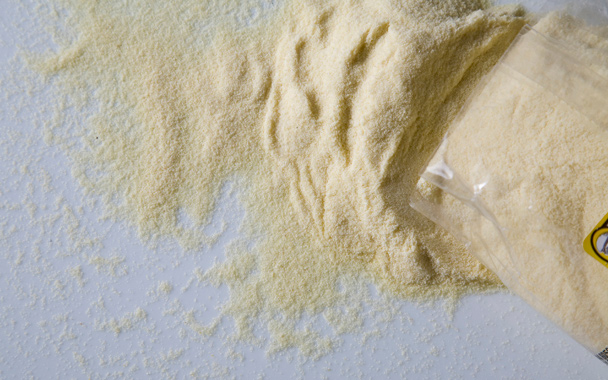I shared a house once with three women and a man named Rajendra Krishna Raj. Two of the women were from Ireland and one from New Zealand; two, like Raj, were getting their Ph.D.s in computer science and one in statistics. It was chaotic and beautiful in the way perfect student houses can be. One or another of us cooked dinner most nights, with meals as odd and varied as you might think. We’d sit for an hour afterwards, nursing strong caffeinated drinks and chatting before heading off to our evening studies. Raj is from Hyderabad in South India and a fabulous cook; eating his food ruined Indian restaurants for me for decades. But he was always very vague about what he was cooking, so the only thing I actually learned how to make from him was breakfast.
Raj would dice an onion along with a healthy amount of ginger and a chile or two, fetch his black mustard seeds from the pantry, and get down the Cream of Wheat. He’d dry-roast the Cream of Wheat in a wide pan until it turned brown and smelled nutty, then pour it out, add some oil, and start frying his seeds. When they started popping he’d add the onion and ginger and cook everything until soft and just starting to brown. Then he’d add the Cream of Wheat back into the pan, add a big handful of frozen lima beans, and cover everything with enough boiling water from the kettle to just be absorbed by the Cream of Wheat. After ten minutes we’d have a big mass of the stuff, fluffy like couscous but hot and sweet with spice and peppers. Forget your pancakes and bacon—this was the best breakfast I’d ever had.
It turns out that this dish is called suji upma (though you may see both words spelled differently). Suji means semolina, coarse flour from durum wheat, an old variety closer to emmer than to modern bread wheats. Upma is the cooking method of roasting the grain dry or in flavored oil before cooking it in hot water. I’ve seen versions of upma made with vermicelli and with idli (small steamed cakes), and I bet there are more. Raj’s frozen lima beans are a very home-style addition.
Upma is popular at breakfast in South India. My friend Peter, who is married to a woman from Kottayam, in Kerala, told me, “In Rekha’s family, they mostly make a simple upma for breakfast with onions, a few spices, and semolina. They eat this with their hands, mashing ripe banana into the upma. This is very tasty.” I bet. But you can also find upma on the menu in South Indian restaurants at lunch and dinner. One of my favorite places serves it with coconut chutney, fiery tomato chutney, and a rich sambar made from lentils and vegetables that have been cooked forever. I asked the chef why he had this breakfast food on his menu. “Yes, it’s good at breakfast time, but it also makes a very good snack or even light meal,” he said. “Why have it only at breakfast?” Why, indeed.


